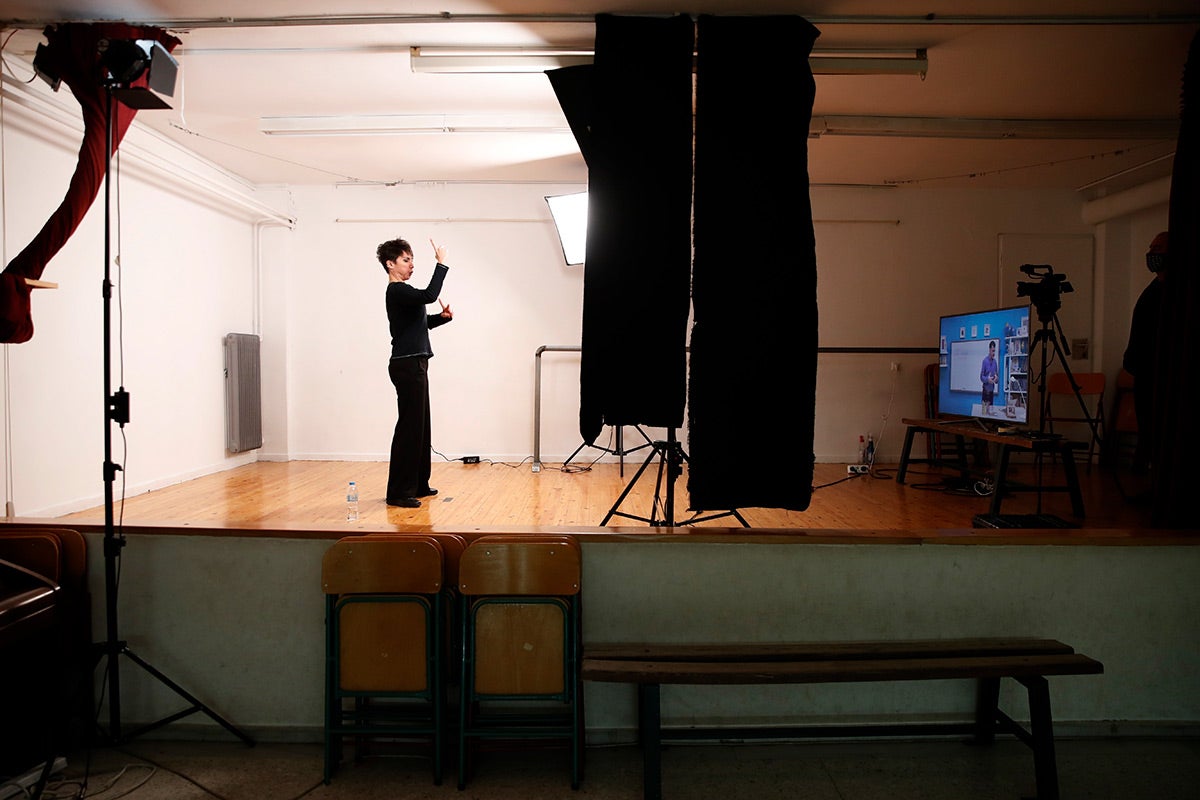Sign Language Is Key to Real Inclusion
Imagine that during a national emergency, you and your loved ones are at risk.

The government is announcing information that could have a profound impact on your safety, but you don’t have access to it because it hasn’t been made available to you. This is the situation many deaf people have found themselves in during the Covid-19 pandemic. For example, when important information was broadcast on TV, often it was not made available in sign language. And safety measures such as wearing face masks and maintaining social distancing made communication more complicated. As schools around the world closed due to the pandemic, remote learning alternatives often failed to meet the needs of children who use sign language, leaving them isolated and excluded from schooling for extended periods of time. But even without an ongoing crisis, Human Rights Watch research has found that people who are deaf and hard of hearing face numerous barriers to accessing information and basic services. In Russia, Iran, Zambia, and other countries, lack of sign language interpreters and information in accessible formats prevent deaf people from accessing healthcare. “Whenever I go to a hospital without someone to interpret for me, they write on a piece of paper that I should come back and bring someone with me,” said a woman with a hearing disability in Gaza. “This experience made me feel less of a person.” Our research in China, Iran, Kyrgyzstan, and Nepal found that deaf children face barriers in accessing education in sign language, while in many other countries, including India and Peru, communication barriers hinder access to public services. "Sign language should be respected just as any other language. It’s our fundamental right and it enables us to communicate and be equal members of our communities," said Jenny Nilsson, member of Human Rights Watch Disability Rights Advisory Committee and Ombudsman for children with disabilities in Sweden. Today we celebrate the International Day of Sign Languages under the theme “We Sign For Human Rights.” As governments continue to respond to the Covid-19 pandemic and plan to “build back better,” they should ensure the human rights of people who are deaf and hard of hearing are respected and they are equally and meaningfully included in society.
Read the full article at the original website
References:
- https://www.eud.eu/news/covid-19/
- https://wfdeaf.org/news/statement-on-accessible-communication-during-covid-19-pandemic/
- https://wfdeaf.org/news/position-statement-educational-rights-for-deaf-learners-during-the-covid-19-pandemic-and-beyond/
- https://www.hrw.org/report/2013/09/11/barriers-everywhere/lack-accessibility-people-disabilities-russia
- https://www.hrw.org/report/2018/06/27/i-am-equally-human/discrimination-and-lack-accessibility-people-disabilities-iran
- https://www.hrw.org/report/2014/07/15/we-are-also-dying-aids/barriers-hiv-services-and-treatment-persons-disabilities
- https://www.hrw.org/sites/default/files/related_material/HIV_Disability_Brochure_0712.pdf
- https://www.hrw.org/news/2020/12/03/gaza-israeli-restrictions-harm-people-disabilities
- https://www.hrw.org/report/2013/07/15/long-they-let-us-stay-class/barriers-education-persons-disabilities-china
- https://www.hrw.org/report/2019/10/02/just-other-kids/lack-access-inclusive-quality-education-children-disabilities
- https://www.hrw.org/report/2020/12/10/insisting-inclusion/institutionalization-and-barriers-education-children
- https://www.hrw.org/video-photos/video/2018/09/24/322749
- https://www.hrw.org/video-photos/video/2018/09/23/322755
- https://www.youtube.com/watch?v=ZI8gvWS6FyI&list=PL5m1_CAEBBs3ECo_s70sktFk0cMVhq8xI&index=15
- https://www.hrw.org/report/2012/05/15/i-want-be-citizen-just-any-other/barriers-political-participation-people
- https://wfdeaf.org/iwdeaf2021/
- https://www.un.org/en/observances/sign-languages-day
